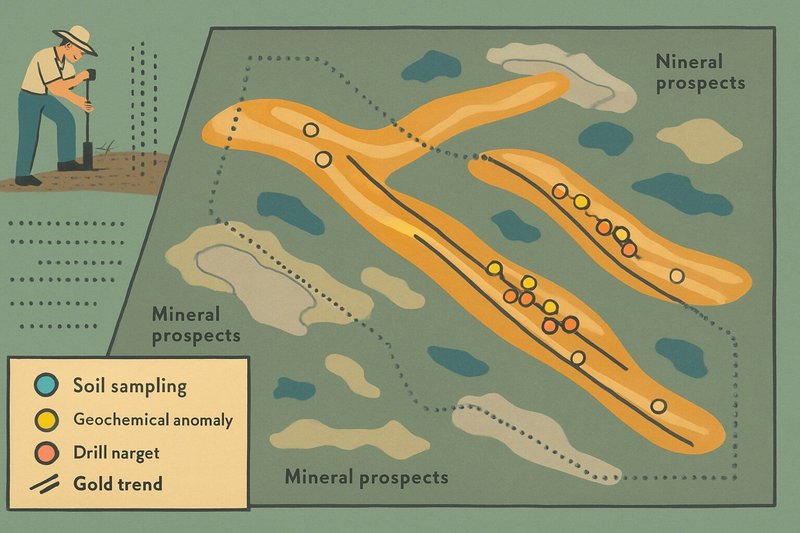Midas Minerals (ASX: MM1) is preparing to further test the potential of its Challa project in the Goldfields region of Western Australia.
Positive assay results from a recent program of infill soil samples have boosted the company’s confidence in the project.
Midas conducted the sampling on five prospect locations on the northern Challa licences to provide additional data points to the company’s existing geochemical datasets.
Anomalous Gold Trends
Managing director Mark Calderwood said the geochemical sampling results had highlighted the exploration potential at Challa, with three anomalous gold trends identified over a 9km strike.
“We are gaining a stronger understanding of the northern gold targets on the extensive Challa project,” Mr Calderwood said.
The company’s next step will be to continue targeted infill auger geochemical sampling on the three gold trends with the aim of defining a number of drill targets.
“Significantly, the stronger gold anomalies can be identified by pXRF and at low parts per billion gold concentrations using the detectORE process, speeding up the exploration process [and] saving both time and money.”
Prospect Locations Tested
Additional sampling at Killarney South broadly confirmed the modest strength gold anomaly over the 3.3km zone that contains the old Killarney gold workings.
While geochemical assay results along the trend at Killarney North were somewhat patchy, the company believes it represents an excellent target for further exploration.
Midas plans to undertake infill auger sampling at the site to define drill targets.
Wondinong Sampling
Midas has identified a 2.6km trend of geochemical anomalies at Wondinong East, including a 600m gold-in-soil anomaly of moderate strength extending west from the high-grade John Bore South copper silver occurrence.
The company performed soil sampling at Wondinong earlier this year that focused on a 2.8km cluster of anomalies to further understand the distribution of the copper, gold and PGE anomalism.
Auger geochemistry work in 2021 at John Bore returned high lead and zinc anomalism, and Midas’ 2025 soil sampling confirmed the anomaly and the likelihood that it derives locally.
